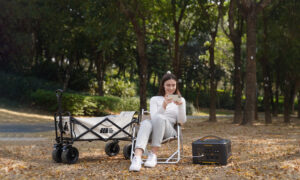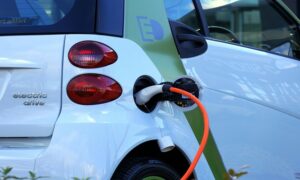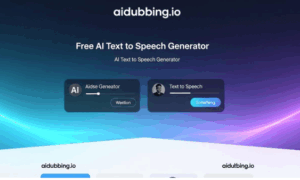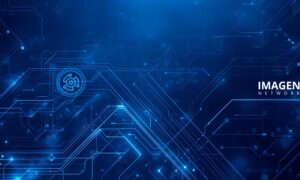Welcome to a greener future! In this electrifying blog post, we will embark on an illuminating journey towards unlocking a sustainable future. Brace yourself as we dive deep into the dynamic duo of electrification and renewables, unearthing their pivotal role in shaping our planet’s destiny. Get ready to charge up your knowledge and discover how these powerful forces are sparking change across industries, economies, and even our everyday lives. So grab your renewable energy enthusiasm and join us as we uncover the keys to a brighter tomorrow.
What is Renewable Energy?
Renewable energy is energy that is obtained from renewable resources such as solar, wind, water, and geothermal sources. These resources are not only environmental friendly but also reliable. Renewable energy has the ability to provide sustainable energy solutions because it helps reduce emissions while providing a constant source of electric power. By switching over to renewable energy emissions can be offset, which in turn helps protect the environment.
Renewables have been growing in popularity because they do not produce greenhouse gases like polluting fuels do. The reliability of renewables makes them an attractive alternative to fossil fuels for powering our economy. There are many different types of renewableenergy, each with its own benefits and drawbacks.
Solar energy is one type of renewableenergy that relies on the sun’s rays to generate electricity. Solar panels convert light into electrons that can be used to power devices. Solar energy is widely available but it has a lower capacity factor than otherforms ofelectricity because it produces less power during peak hours.
Wind turbines use wind to generate electricity. Wind turbines use blades that rotate to catch the wind and turn the turbine blades, which creates electric current. Wind turbines are larger and more expensive than solar panelsbut they’re more reliable and produce more powerthan solar panels during peak hours.
Waterpower involves using waterfalls or hydrokinetic devices to chop up large waves into smaller waves and turn gears that create electricity. This typeof renewableenergy works best when there’s plenty of rainfall because it takes a lot of water to create large waves.
Geothermal energy is obtained from the heat of the earth. Geothermal Power tries to tap into hot rocks and use the heat to turn turbines that generate electricity. This formof renewableenergy has the lowest emissions because it doesn’t produce greenhouse gasses like polluting fuels do. However, geothermal power is not widely available and it’s costly to install.
Types of Renewable Energy
There are many different types of renewable energy, and they vary in terms of how quickly they can generate energy and the amount of energy they produce over the long term. These sources include solar, wind, hydroelectricity, tidal power, and bioenergy. Solar panels use light to create electricity, while wind turbines use the wind to generate power. Hydroelectric dams use water to spin turbines and make electricity. Tidal power comes from the tides, which are naturally occurring waves. Bioenergy is generated from plants that are burned to create energy.
Solar energy is one of the most common types of renewable energy. Solar panels work by converting sunlight into electricity. Solar energy is versatile and can be used in a variety of ways: to produce heat or electricity for homes or businesses, or to provide light. Solar cells usually have a lifespan of around 10 years but could be replaced earlier if damaged or updated with new technology.
Wind turbines can be used to make either electric power or thermal energy from the wind. Wind turbines use an impulse gearbox to turn the blades, which makes them efficient at generating power from winds that are below gale force (32 km/h). The average wind turbine produces around 2 kW of electricity but could reach 5 kW under ideal conditions.
Hydroelectricity uses water moving through a dam to turn generators that produce electricity. A hydroelectric dam can have anywhere from one to six generating units depending on the size of the dam. The average installed capacity of small hydroelectric dams is around 1 MW, while medium-sized and large dams can have capacities of 5 MW or more.
Tidal power comes from tidal waves, which are caused by the moon and sun interacting with the Earth’s oceans. Tidal generators use a system of chambers and pipelines to collect water that has been pushed up by the waves and then directs it into turbines for energy production. The amount of power generated varies depending on the size and location of the tidal stream.
Bioenergy is generated from plants that are burned to create energy. biofuels can be used to produce gasoline, diesel, kerosene, heat, or electricity. Biofuel producers can utilize a variety of crops to create bioenergy, such as corn ethanol, biodiesel, sugar cane ethanol, switchgrass ethanol, palm oil biodiesel, municipal solid waste biomass briquettes , and municipal solid waste residue (MSW).
Pros and Cons of Renewable Energy
Renewable energy is growing in popularity all over the world as more people become aware of its environmental benefits. However, despite its many benefits, renewable energy has certain cons that should be taken into account before implementing it in a given application.
One potential drawback of renewable energy is that it can vary significantly in output based on location and weather conditions. For example, during periods of high demand for electricity, such as hot summer days, solar panels may generate more electricity than they do during cooler winter months. Solar power is dependent upon the sun’s rays and can also be affected by cloud cover and other weather conditions. This variability makes renewable energy difficult to integrate into a grid system and can lead to cost spikes when the supply exceeds demand.
Another potential problem with renewable energy is intermittency. Renewable energy sources such as solar and wind typically produce little or no power at night or during periods of low demand. This means that these sources need to constantly be fed with enough new electricity to keep up with demand or else they will be connected to the grid and provide power at a loss. This problem is known as “the intermittency challenge” and remains one of the biggest challenges faced by renewable energy developers.
Despite these challenges, there are many reasons to consider using renewable energy sources in your business or home. By taking these issues into account, you can make sure that you get the most out of your investment while minimizing any potential problems .
How Does Renewable Energy Work?
Renewable energy sources such as solar, wind and hydro power have been steadily increasing in popularity over the past few years. This is largely due to their environmental benefits of being carbon-free and not releasing harmful pollutants into the atmosphere.
Renewable energy is made up of a variety of different sources, including solar, wind, hydroelectricity and geothermal power. Solar energy relies on the sun’s rays to create electricity. Photovoltaic cells capture these rays and turn them into electricity. Wind turbines use the wind to turn a propeller to create electric current. Hydroelectricity uses water pressure to turn a turbine which produces power. Geothermal uses heat from the earths crust to produce electricity.
Renewables have long been seen as a sustainable alternative to traditional energy sources like oil and coal. Solar panels can last up to 30 years while wind turbines typically last around 20 years before needing replacement or repair. Renewables also don’t release contaminants into the environment like coal does.
The Role of Electrification in a Sustainable Future
Electricity is an essential part of a sustainable future. While it is still largely powered by fossil fuels, electricity has the potential to play a major role in reducing global carbon emissions. Renewable energy sources like solar and wind have the potential to become even more important as we move away from using coal and oil.
CFLs (compact fluorescent lamps) are one of the most promising renewable energy sources. They are inexpensive to install, can last up to 25 years, and produce less heat than traditional incandescent lamps. As CFLs replace incandescent lamps in homes and businesses, they will create savings on energy bills while helping to reduce greenhouse gas emissions.
Some challenges remain for utilities and other interested parties when it comes to transitioning to a more sustainable future with renewables. First, we need to make sure that the larger infrastructure that exists today—like power grids and delivery systems—can handle the increased demand for electricity from renewables. Second, prices for renewable energy sources must continue to fall so that consumers can benefit economically from investing in these technologies. And finally, governments must provide incentives for consumers and businesses to adopt these new technologies.
Conclusion
There is no doubt that the era of electric vehicles is upon us, and it’s already having a transformative impact on our economy and environment. To unlock a sustainable future, we need to make more efficient use of electricity, deploy more renewable energy sources, and help reduce emissions from all sources. Electrification can play an important role in accomplishing all of these goals – and it’s also crucial that we keep our streets clean and safe while we’re doing it.



































